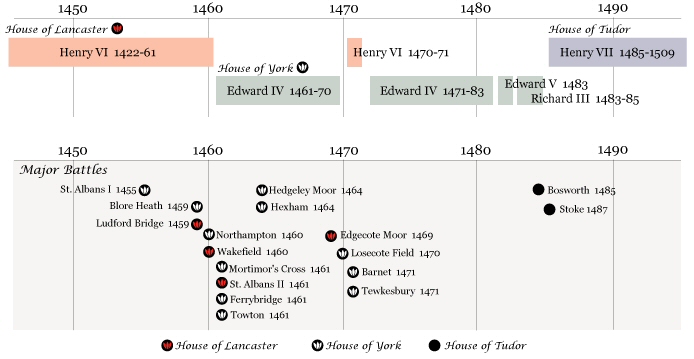


The Wars of the Roses were a series of civil wars fought in medieval England from 1455 to 1487 between the House of Lancaster and the House of York. The name Wars of the Roses is based on the badges used by the two sides, the red rose for the Lancastrians and the white rose for the Yorkists.
Roses for the House of Lancaster , York and Tudor



Major causes of the conflict include: 1) both houses were direct descendents of king Edward III; 2) the ruling Lancastrian king, Henry VI, surrounded himself with unpopular nobles; 3) the civil unrest of much of the population; 4) the availability of many powerful lords with their own private armies; and 5) the untimely episodes of mental illness by king Henry VI.

The Wars were fought largely by the landed aristocracy and armies of feudal retainers; supporters of each house largely depended upon dynastic marriages with the nobility, feudal titles and tenures.
The Wars of the Roses, with their heavy casualties among the nobility,
ushered in a period of great social upheaval in feudal England and led to the
fall of the Plantagenet dynasty itself. The period saw the decline of English
influence on the Continent, a weakening of the feudal power of the nobles and a
corresponding strengthening of the merchant classes, and the growth of a strong,
centralized monarchy under the Tudors. It
heralded the end of the medieval period in England and the movement towards the
Renaissance. On the other hand, it has also been suggested that their
traumatic impact was exaggerated by Henry VII to magnify his achievement in
quelling them and bringing peace.
![]()
|
tenure |
(hűbéri) birtok, tisztség |
credits:
The text was extracted from Wikipedia The Free Encyclopedia under GNU Free Documentation Licence,
and the Wars of the Roses official site by permission.